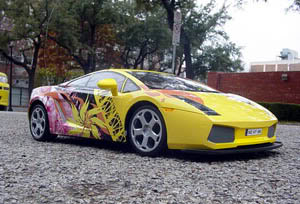This is the second in a series on how we can build an energy future based on our best science and no longer critically dependent upon exhaustible and polluting fossil fuels.
The Five Transport Energy Solutions and One Imperative
There are five fundamental options to move into a post-oil, post-natural gas energy world and one imperative:
- Imperative A: End-use energy efficiency and conservation. We will have to invest less in new energy supply if we get more from the energy we use (efficiency) as well as act and plan in a way that recognizes the limited nature of natural resources (conservation). The electron economy scenarios have the greatest potential for end-use energy efficiency. The short-term measures above will also increase efficiency.
- The Renewable Electron Economy: electric vehicles, stationary devices, and new electric transport infrastructure powered by electric generators using renewable energy and the associated energy storage challenge.
- The Nuclear Electron Economy: electric vehicles, stationary devices, and new electric transport infrastructure powered by electric generators using nuclear energy (with or without fuel reprocessing), with associated security risks, waste and dependence upon fissionable fuel supply.
- The Coal CCS Electron Economy: electric vehicles, devices and new electric transport infrastructure powered by electric generators using coal with carbon capture and sequestration, a technological "maybe" dependent upon coal supply.
- The Coal to Liquid (CTL) Transport Economy: converting coal to liquids (sometimes via the Fischer-Tropsch process), burned in internal combustion engines leading to climate disaster and resource exhaustion.
- The Biofuel Transport Economy: Aggressive expansion of unregulated biofuel production for land transport will almost certainly lead to ecological and social disaster. Biofuels, sustainably produced, especially from wastes, will have a niche in aviation and marine propulsion.
Sub-option for Solutions 1, 2 and 3: The Hydrogen Economy is parasitic on the Electron Economies, reducing net usable energy by two-thirds for the purpose of having a compact liquid/gaseous fuel extracted by energy-consuming electrolysis. A Hydrogen Economy therefore requires a 2 to 3 fold increase in the amount of and therefore the capital investment in the required clean electric infrastructure to support renewably produced hydrogen. (There are currently even more expensive renewable ways to extract hydrogen from water using very high concentrations of sunlight that do not use electricity as an intermediary).
Any of these five transport energy supply solutions will be made much more feasible if aggressive end-use efficiency measures are pursued in parallel; therefore the imperative of energy efficiency.
Narrowing the Field
To simplify matters, we can eliminate options "4" and "5" as the costs of climate, ecological, and social disaster outweigh the benefits of a supply of liquid fuel that is not petroleum-based. Analyses that only consider liquid fuels divert the debate, intentionally or unknowingly, from more promising solutions; it is astounding how some commentators can discuss these options as if a continued supply of liquid fuel for transport was somehow worth enormous ecological and human sacrifice.

Building on early optimism about biofuels from environmentalists, the biofuel lobby, unfortunately, has a great deal of influence in the United States. This is a truly tragic state of affairs in American politics, as many farmers and farm-state politicians have tied their political and economic hopes to this option. Biofuel mandates have pushed up the price of crops and created an incentive to plant and overplant corn as well as other potential biofuel crops. As fuel prices push up food prices, these prices are further elevated by the transfer of prime farmland from food production to fuel production. Without cutting biofuel incentives and mandates, there will be no countervailing influence to conserve the soil or return land to food production. Talk of cellulosic ethanol or other future innovations in biofuel production function currently as an entering wedge for the current unsustainable variety.
The only savior for biofuels is a rigorous eco-certification program that excludes the conversion of food crops to fuels, mandates soil and water conservation, and privileges the use of waste streams for fuel. Under such an international eco-certification program, biofuels will have a role as clean marine, aerospace and specialized land transport fuels.
Luckily, the coal-to-liquids option has few advocates and so far little political support. If however, petroleum prices continue to rise and so-called "skeptics" of global warming continue to be well represented in the US Government, there may be various support schemes for coal-to-liquid that are inserted into legislation. Unlike the biofuels solution, coal to liquids would "work" to move a large group of vehicles for a few decades not unlike our current vehicle fleet, but with enormous climate sacrifice as it represents an increase in carbon emissions over even the current sorry state of affairs.
In the next installment of this series, I will explore which of the three electron economy scenarios will predominate. As each scenario varies only in the manner in which electricity is supplied, i.e. generated, and not used, the below recommendations about how to create a secure post-oil transport system using electricity could apply to all three.

